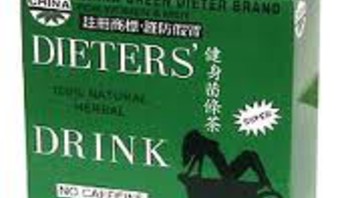There are various weight loss teas on the market designated for dieters. These products typically contain one or more of the following natural laxatives: cascara, buckthorn, aloe, senna, rhubarb root, and castor oil. Two of these herbs-senna and buckthorn-are especially potent and should be used with caution.
The Food and Drug Administration has received numerous reports of adverse effects associated with the use of various dieter’s teas, including four deaths that have been attributed to their use. Therefore, the FDA urges consumers to follow package directions carefully when using dieter’s teas. Such teas should not be steeped longer than recommended, as stronger teas can cause side effects.
Sometimes the presence of these natural laxatives is not evident from the ingredient list because alternate names are given. Senna, for example, is also known as locust root. If you see the name of an herb or ingredient you do not recognize, look it up.
Herbal laxatives are often used as weight-loss aids because many’ consumers believe they prevent calories from being absorbed and they are eliminated in the stool. Studies by the FDA’s Food Advisory Committee, however, show that diarrhea induced by laxatives has very little effect on weight loss or the absorption of calories. That’s because laxatives do their work in the colon and not in the small intestine, where calories are absorbed.
Adverse effects associated with incorrect use of dieter’s teas are as follows:
• Short-term: People who use dieter’s teas for the first time are the ones most likely to experience these effects, which include stomach cramps, nausea, vomiting, and diarrhea that last several days.
• Chronic: People who use dieter’s teas for months or years can experience chronic diarrhea, pain, and constipation caused by a dependency on laxatives.
• Severe: Adverse effects such as fainting, irregular heartbeat, dehydration, electrolyte imbalance, and even death may occur in individuals who use these teas along with a drastic weight-loss program, such as very-law-calorie diets, or are anorectic or bulimic. The four deaths reported to the FDA were in this category, and all the women involved had a history of such medical problems.
A FEW WORDS ABOUT HERBAL EXTRACTS
Several of the entries contain the term “standardized” extracts and places where herbal extracts are given in. ratios. Here is what these terms mean. Standardized extracts are the concentrated dried residue of the fluid derived (extracted) from an herb. Standardized extracts are preferred over regular extracts because they are more potent and they provide a “standard” herbal product that maintains its quality from batch to batch, which means you are guaranteed the same potency time after time.
• More is not always better. An impressive list of ingredients in a proprietary blend can mean little or nothing because you have no way of knowing exactly what you are getting and how much.
• Make sure any reportedly effective ingredients are present at adequate levels to promote weight loss. For example, the reported beneficial dose of chromium picolinate is 200 to 400 meg per day for women. If the product you are considering contains 10 meg chromium picolinare along with a proprietary blend of eight or ten substances in undisclosed amounts, that product may not be helpful to you.
• Consider safety. Does the product contain ingredients that are unsafe? Are you taking any medications or using other substances (e.g., alcohol, caffeine) that are dangerous to use with this product? Are you anergic to any of the ingredients, including fillers?
You may see “St. John’S wort (standardized 0.3 percent hypericin),” which means the product is guaranteed to contain the active ingredient hypericin at 0.3 percent, which happens to be the acceptable percentage for St. John’s wort.
An extract may be presented as a ratio-say, 40:1-which means the concentrated extract is 40 times stronger than the whole herb. Therefore, if a capsule contains 150 mg of ginseng, for example, and the ratio given is 40:1, that is equivalent to taking 6,000 mg of the whole herb. You get the benefit of 6,000 mg of whole herb in only 150 mg of standardized extract.
